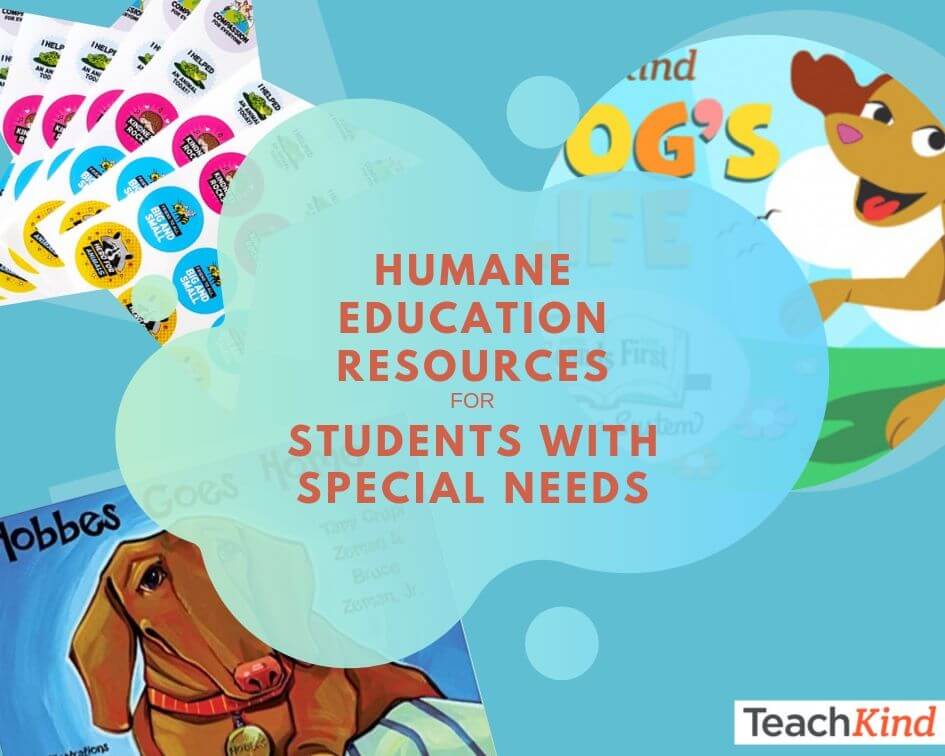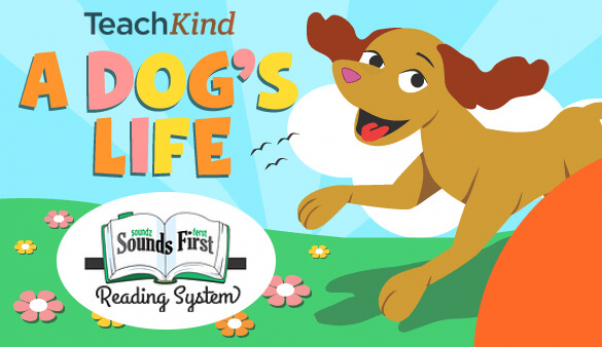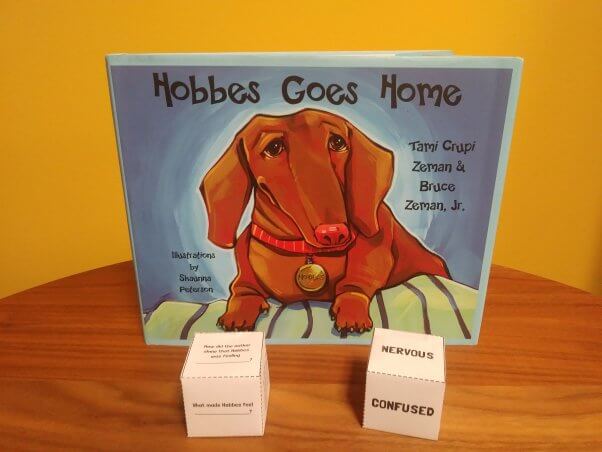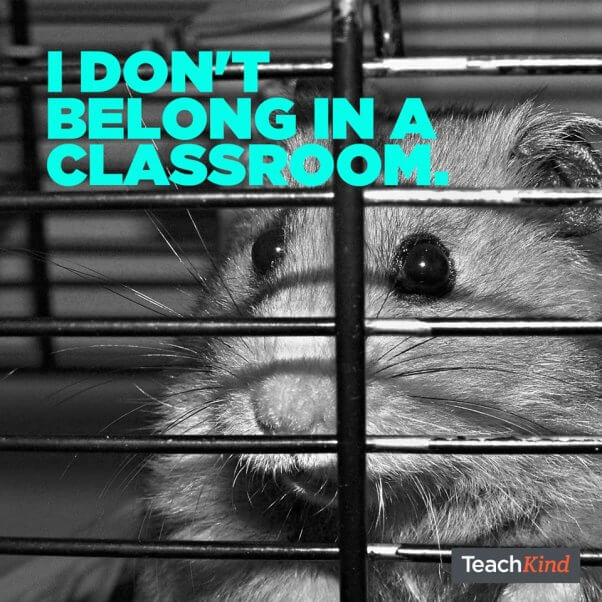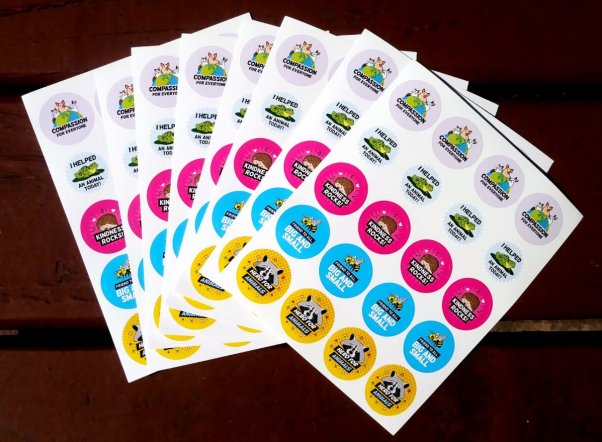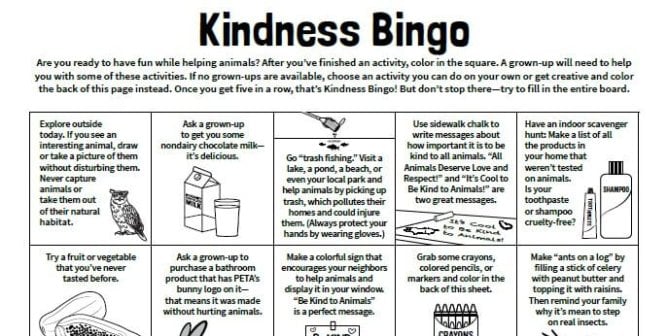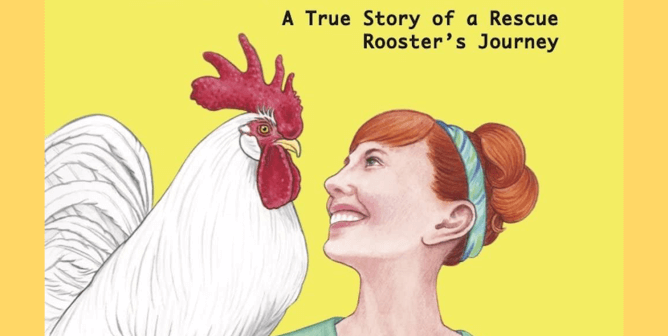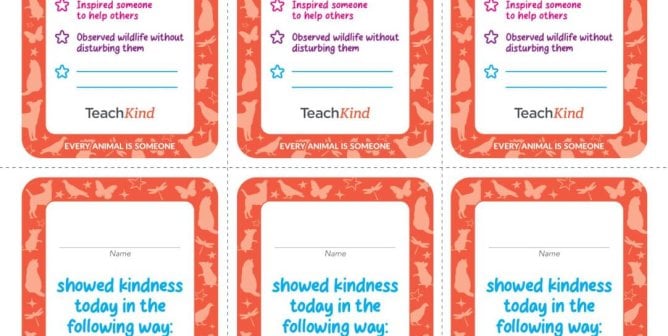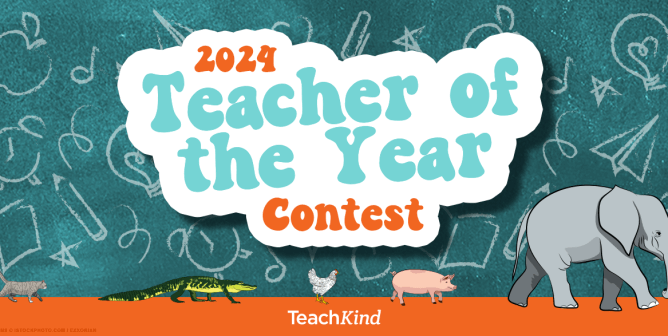5 Humane Education Resources for Students With Special Needs
Humane education and special education share several core values. Both practices aim to modify the general education curriculum to include those who are marginalized and use unconventional teaching methods. Both place social and emotional learning at the forefront of a child’s education and recognize that academic content can—and should—be taught in tandem with soft skills such as exercising empathy for others. Perhaps most importantly, the humane education and special education movements are driven by teachers who understand that all individuals matter—regardless of their abilities or the way they look or behave.
Whether you teach in an inclusive, a pull-out, or a self-contained setting, incorporating compassion for animals into your lessons can have far-reaching benefits for students of all abilities. Teaching them about the plight of animals—and how they can reduce animal suffering in their communities and beyond—can engage reluctant learners and improve students’ social interactions with their peers, but it can also inspire kids to apply what they learn in a broader (even global) context.
Of course, I believe that it’s crucial for kids to learn how to address conflict and be responsible decision-makers, but we shouldn’t limit the context of these social skills to their relationships and their classrooms. What about the broader community? What about other species? What about communities that they may never interact with directly? What about the planet at large? Eventually, I realized that SEL [social emotional learning] wasn’t the problem … it was that humane education wasn’t explicitly part of most SEL initiatives.
—Kristina Hulvershorn, Director of Humane & Restorative Programs, Peace Learning Center
Use the following animal-friendly resources to academically motivate your students with special needs, promote prosocial growth, and reduce violence in your school and beyond.
‘A Dog’s Life’ for Delayed Readers
TeachKind’s much-loved “A Dog’s Life” comic is now accessible to students at lower reading levels, thanks to our recent collaboration with Sounds First, a company that developed a reading system to help early readers and delayed readers navigate the confusing pronunciation of many English words. This edition of “A Dog’s Life” includes a chart on the last page that explains the pronunciation set forth in the code created by Sounds First. This code is called a “phonemic respelling,” similar to that provided in the dictionary but simpler. Teachers and children can refer to the chart, but many children find the code helpful with very little instruction. The story’s text has been modified to accommodate a lower level of reading—without compromising the integrity, storyline, or impact of the original version. With larger-sized, simplified text and fewer words used overall, early and delayed readers will be able to benefit from the positive message about kindness to animals in this comic without being too intimidated to attempt to read it.
‘Hobbes Goes Home’ and the Emotions Dice Game
Some students with special needs may have difficulty controlling their emotions or recognizing and appropriately responding to those of others. The children’s book Hobbes Goes Home is a story about a sweet dog who finds a loving home. It’s full of expressive illustrations, excellent for helping students identify similar situations and feelings that they and others might share with Hobbes. The richly detailed drawings also help create a hopeful mood and engage readers in the story as they witness the changes in the dog’s emotional state. After reading the story with students, use TeachKind’s Emotions Dice Game to help them comprehend the text and identify the various emotions that Hobbes felt throughout his journey and what made him feel that way. Be sure to discuss ways to handle various interactions with humans and animals constructively.
Vegan Math Manipulatives
A common accommodation for students who experience difficulty understanding abstract concepts is to allow them to use manipulatives—concrete objects such as base 10 blocks—when solving math problems. Turning math into a hands-on learning experience by using manipulatives as teaching tools is a fantastic way to make the subject fun, accessible, and real for those struggling to learn. It’s an immensely helpful tool for tactile or visual learners and can help students at all levels grasp mathematical concepts more effectively and become familiar with new material. While just about any small object can be used as a math manipulative, one of the most economical and fun options is food. Small snack foods can be easily incorporated into an engaging lesson—and naturally, as a compassionate teacher, you can choose vegan manipulatives that will show kids that these foods not only are tasty but also don’t contribute to animal suffering. Food manipulatives are perfect for teaching counting, estimating, fractions, graphing, perimeters, and sorting as well as addition and subtraction and even multiplication and division. The best part is that students get to eat their food manipulatives after the lesson is over, which can reward positive behavior and foster feelings of confidence toward subject matter that can otherwise be daunting.
Compassionate Routines
Most students feel at ease and are, therefore, more likely to succeed when they know what to expect throughout the school day, but students with disabilities can especially benefit from structure and regimented procedures. Try mixing these compassionate classroom routines into your daily schedule to make the school day run smoother and to foster empathy for animals in your students. For example, caring for a classroom plant, as opposed to subjecting a small animal to the dangers of a busy school, can teach students about responsibility, as well as life cycles and the basic needs of living things. Many of these compassionate routines can help reinforce positive behavior in students and contribute to a positive classroom climate—both essential to the academic success and emotional health of students with special needs.
Kindness Reward Stickers
Another way to reinforce affirmative behavior in students is to use TeachKind’s kindness reward stickers. When you notice students taking the feelings of others—whether other classmates or animals—into consideration, take a moment to draw attention to them and their empathetic actions and then present them with a sticker. For example, if a student chooses not to kill an insect who has entered your classroom but instead alerts an adult so that the uninvited guest can be gently removed, reward him or her with a sticker. Not only will this student then be more likely to exhibit positive behavior in the future, that kind act will also now serve as a model for others to follow. You can also use these stickers to track constructive behavior in students’ behavior logs, which are a common tool used with those who experience difficulty interacting with others. Give a sheet of these stickers to your students’ elective teachers and parents or guardians, too, to help them encourage the kids to exhibit good character qualities outside your classroom as well.
In addition to these resources, you can also adapt the lesson plans that you’re already using to foster empathy for animals. Animals are often included as part of the elementary school curriculum, but we don’t want to miss opportunities to incorporate a key element—compassion—into the lessons. We can use kids’ natural affinity for animals to help them absorb academic content while also developing this crucial trait.
View TeachKind’s webinar for a step-by-step guide to creating humane lessons, and see how discussing animal rights issues and meeting academic requirements can go hand in hand.
Want more compassionate classroom inspiration? We’ll send our latest humane education content straight to your inbox! Sign up for TeachKind News to start teaching compassion for animals today:
By submitting this form, you’re acknowledging that you have read and agree to our privacy policy and agree to receive e-mails from us.
